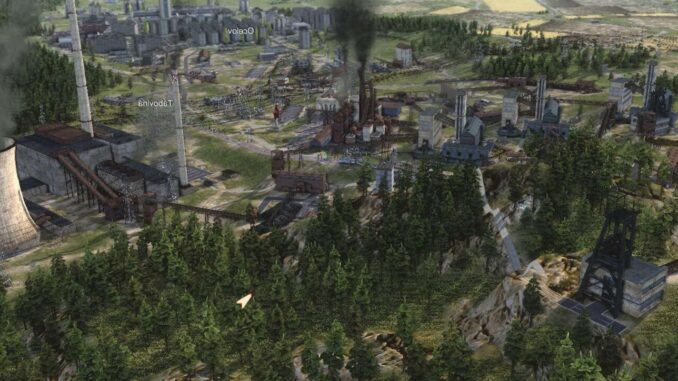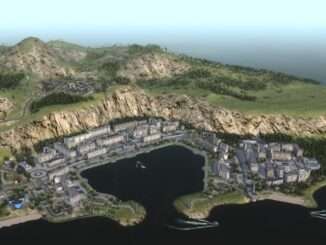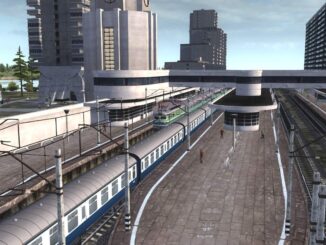
In this brief analysis I provide an overview over the most lucrative branches of economy. I am looking at resource prices, comparison between Rubel and Dollar, profit rates, profit per workforce as well as profit per ton and I give a insight on how to build a stable economy. If you are Cosmonaut: Congratulations. You might still be interested in the production ratio, so be welcome. I also created a spread sheet with all information regarding industry, that I’ll link in the guide. Have fun!
Table of Contents
Introduction
Note: Credit goes to [Nr.2]FEW
“Does it make sense to import raw materials and export finished products?” is a rather commonly asked question. Well, yes it does – in some cases at least. As soon as you are starting to use automatic build mode or importing goods that you cant produce yourself, you’ll need a way to make some money and an infrastructure from your cities to the border in one way or another.
In the following guide we’ll have an in-depth look into the different production chains, not only in terms of import-cost vs. export-profit, but also in terms of workforce efficiency and infrastructure requirements.
A few remarks on the data this is based on:
All calculations are based on import/export prices and workforce (wf) requirements. Costs for infrastructure, vehicles as well as the buildings itself are not directly taken into account, although they are of course brought into discussion.
All calculations are based on ideal daily maximum production and we all just know how well that works. So, they are theoretical! These numbers are not meant to base your budget on, but are much more useful in comparison to each other and finding out what a viable business is and what not.
All calculations are based on Rubel. Why? Because I mostly export into Rubel. Simple as that. Besides that the difference between Rubel and USD is an average increase of prices at about 22 percent in USD. There is one big exemption, which will discussed, but thats the general picture.
All calculations are based on starting prices of a Eastern European Hills map at hard difficulty at 1st of January 1960. Prices are dynamic (if you read this in the far future and we have global events – even more so). Even if you just restart the game you’ll have slightly different prices. Buying a lot of resources will slowly increase the price, selling will decrease the price. Price changes in a production chain (like buying a lot of oil) will influence prices of all other resources in that chain (like fuel, or bitumen or chemicals etc.). Overdoing it might result in prices crashing and thus your profit rates will decrease.
Also: Manufacturing cars and trains, as well as ships, hasnt been taken into account, simply because I dont have much of a comprehensive database for that. Feel free to add your information and of course feel free to discuss any findings and have your own opinion about things. I am looking forward to a fruitful discussion, thats part of the reason I wrote this guide. Enjoy!
Also: “Я коcмонавт…” – Yes. Great. The motherland is proud of you. We all are and I am a hundred percent positive not ironic. You are not necessarily the target audience, but of course you are still welcome! 😉
Rubel vs. USD
Trading in Rubel or in USD usually depands on the proximity to the border belonging to either side. Since we dont have the option to exchange currency for one or the other, both are mostly separete from each other. Yet, there a few situations where actually have to deal with both currencies, e.g. when using a prebuild map with cities on both borders, and there a few interesting finds as well. Let’s go.
Currency ratio
Sell and buy prices are at average about 21.80 percent higher in USD, so Rubels are the stronger currency (or we are just being f*cked over by the west – it must be one of those). This ranges from about about 2.6 percent difference in Oil to a whopping 30 percent difference in crop-related items (food, meat, livestock, clothing, fabric).
This can be turned into some good value, for example by exporting Food into USD and importing Oil from USD and exporting Fuel into Rubel, allowing for a nice turnover. Otherwise the gameplay around the currency remains rather limited.
Raw Resources
At first glance raw resources seem to be the most profitable, since you dont have to pay much more than the electricity – except: they are not.
Let’s look at coal ore:
Given an theoretical 100% production efficiency you can produce 924t/d which will make you about 7260 Rubel. This a whopping 64606% profit rate, since you only have to pay electricity. But…no. You need a lot of workforce, making it 33,0 R/wf ratio, which isnt terrible and you need to factor in transport, giving you a 7,85 R/t ratio, which is terrible. With a 12t vehicle that makes about 94.2 R profit per run – good luck with that.
The same goes with coal, iron ore, iron, quarried stone, gravel, wood, boards (with a record of 0.49 R per ton), and cement. Never export your raw resources.
But Oil! Well…thats a difficult one.
Oil in itself gives a good profit, you don’t need a workforce and the profit per t is about 41,23 R/t which is great, giving you a 492 R profit on 12t Tanker run. Additionally the Oil Rig in itself isn’t expansive (about 7.500, allowing you to make up for it in about month). But Pipelines are very expansive, forcing you to either rely on a lot of transportation or investing heavily, thus waiting a long time before you have achieved breaking point. Additionally you are missing out on other opportunities regarding Oil products. Be aware: Never export oil in USD, it’s a very bad trade.
Last: Energy. It’s good, you’ll produce it anyways and most importantly you will need to setup the infrastructure for it anyhow. Once you produce your own coal you will have excess amounts of coal anyways and with the low amount of workforce required that doesnt make much of a difference anyways. Since power plants are rather expansive to build and the actual per day profit isnt very high (absolute maximum of 1036 of profit) it’s not much of a business, but it helps you balancing out your infrastructural costs.
Building Materials
In most cases it’s not worth it, so I’ll be brief. Besides: You’ll most likely want the construction material for your own building.
Boards: At a sell price of around 13 R per ton it’s not going to net you any worthy profit. Buying wood and selling boards is a horrid idea, leaving you with a profit of about 0.5 R/t – thats not even paying your fuel.
Cement and Prefab Panels come with the same problem – the profit rates are simply to low, where it is even to be doubted wether it really makes sense to export your overproduction, you might barely make up for the fuel.
Bricks are slightly different, but only if you actually produce the coal yourself (a factory needs 51t/d) and have excess transport capacity on the bordertrip.
Steel is again quite different. Since you need a lot of steel yourself you should not ever export it. Yet it is noteworthy that iron only makes for about 1/3 of your resource cost. Given that you have set up a coal industry (for bricks and power) it might make sense, depending or border proximity and/or transport capacity, to go into steel as fast as possible and buy iron before setting up iron mines, which again are cost and workforce intensive.
Crops
Here we go…you can make quite a lot of money here. I personally find it quite a good idea for mainly two reasons and several others:
- Maintaining a good resource flow in crops is difficult, bc of the growing cycle, bc you have to estimate how much you’ll get per field etc.
- When exporting goods you’ll often have your vehicles return empty from the border anyways, so why not grab a few tons of crops on the way home.
- Growing crops takes a lot of space
- Eastern farming equipment is subpar, almost forcing you to spend USD
Now, it’s all manageable and Cosmonauts will tell us how well they get along with their farming. But thats not our topic for today and we will get on with the trading, since mass industrialisation and the great leap forward are the way to go and besides that we all know that farmers can never be part of any successful revolutionary movement and will always be a hindrance on the glorious way to…anyways.
Food
You will want to produce this yourself anyways. With full important you’ll pay about 763 R and full export nets you about 1640, more than double the amount and one of the best daily production rates.
Conversion of raw materials to product is about 2 crops to 1 food, which is still okay – given the fact that the SKD 706 can carry 10t crops and 6.5t food and that you might want to supplement your production by homegrown crops anyways – and allows you to have a good transport efficiency.
Alcohol
Quite profitible as well. Besides: Destilleries look good. Overall profit is lower then fod, but profit/t is considerably higher. Problem here: Your trucks cant export much alcohol (about time we can use tankers for alcohol…can we, please?) and the conversion rate of 5t crops to 1t alcohol isn’t good for transport either. So it’s a grain of salt there.
Livestock
One of the best deals around, especially in early game. Since livestock is rather pricy you get a lot of relative profit (about 332 percent) with a relatively small workforce (50 workers compared to 170 for the food factory) and the livestockfarm is cheaper than the food factory. The conversion rate is slightly better: exactly 2t crops – 1t livestock and the profit/t is considerably higher with 121 R/t. Yet the rather small production rate of 5t/d is limiting you to a surplus of 610 R/d. So it’s not as great as it might seem at first glance, but still a very viable option, even though I rather tend to food factory.
Slaughterhouse
I don’t know what went wrong here and if it’s intentional or not, but the relation between livestock and meat doesnt add up. If you were producing from import only at 100% efficiency you’d end up with a whopping 13680 R deficit per day. Giving the great conversion between crops and livestock you are strongly encouraged to produce meat from homegrown livestock. It’s even more viable to sell exceeding livestock right away rather than to produce meat and export that – you’ll loose out on money this way, besides the fact that you need special transportation for meat, that you can’t use otherwise and that will necessarily be empty on it’s return trip. Just stay off of that.
Oil Industry
Good money to be made here, especially since you may want to produce your own fuel anyways. Yet the setup costs are pretty high.
I wrote about Oil Rigs before in raw resources, so check it out there, if you haven’t already.
Refinery:
One of the highest overall production rates and a potential 17k/d profit, requiring 500 workers, yet providing 34,77 R/wf, almost four times more efficient than the food factory. Also: Bitumen. It’s mostly a byproduct and not too useful really (theres even a mod “Small torch” that lets you burn Bitumen just to avoid it clogging up your production). You might want to export it anyway, so why not snatch a few tons of oil on the return trip. Pipelines for connecting an oilfield are almost as expansive as a traintrack itself and the oil capacity on the standard map is quite limited as well. With a profit rate of about 150% and a Profit/t of 139 R it’s quite the way to go.
Just bear in mind: Buying a lot of oil can quickly influence the prices and pollution is a thing to worry about, especially since you need to have 1500 workers (500 per shift) in a somewhat manageable distance.
Also: Trading in USD results in a higher efficiency, bc Oil is relatively spoken cheaper in USD in comparison to the USD prices of Fuel and Bitumen. Oil is the only resource that comes at around the same price (2.6% increase) in USD as in Rubel while the average is about an 21.80 percent increase in price, with Bitumen and Fuel both having an 11% higher price in USD.
Chemical Plant:
Okay, this is literally turning sh*t into gold. Blend one part of each gravel, wood and crops and two parts of oil. Mix it really well and let it sit for a day and it’ll transform into one part of chemicals. Praise be. Seriously, the numbers speak for themselves: Importing all resources costs 87,6 R, with Oil making up for more than 50% of the costs, yielding 640 R/d, which makes it 732% profit rate, at a profit of 1283 R/t. Besides you might need to transport the goods to your chemical plants anyway, since you might not have all of them sitting at one place (Check out MG83’s savegame for an amazing Chemical Plant layout). The only downside is the atriociously low production rate of .5 ton a day, somewhat limiting your daily profit.
Plastics Factory:
Suffers from somewhat the same problem as the Butchery. Since chemicals make up for a large portion of this production it’s not going to be cost efficient for import/export trading. You’d actually be losing money that way, around 5600 R/d at full production.
Various Industries
Woodcutting and Sawmill have been dealt with in Raw Resources and Building Materials respectively. Short: Not worth it.
Fabric:
Requires a full daily production worth of chemicals and is thus limited in it’s profitability. The overall daily profit is okay (637 R) with the increase in value being mediocre (54%) and the profit per workforce being subpar (6,38). The real value is the chemicals, so this not much of an import/export business.
Clothing:
It’s a bit, but not much better than fabric. Profit per t seems great at first (592 R/t), but then again the transport capacity in clothing is smaller than it is for other goods, so there goes that. Not terrible, but not a great investment either.
Mechanical Components:
Uses steel and steel is expansive and before you’ve setup your own steel production you’ll probably import a lot of it, which doesn’t exactly help keeping the price low. You’ll also need a lot of it for setting up your pipelines and conveyors, so you’d rather keep it yourself. With an increase in value of 6,94 percent and a meager 3,93 profit per workforce this simply isn’t a business and for that reason I’m out.
Electrical components:
You need Plastic, Steel and Chemicals – need I say more? Well one more thing: 150 workers for 3,8 tons of components. Also requires research and quite some bit of an investment, so: nope.
Electronics:
Mixing a lot of expansive components to create a slightly more expansive product doesn’t result a lot of increase in value. Positive point here: Overall low transport capacity needed, but at that stage (again research required) you shouldn’t be worrying about that anymore.
Conclusion
Importing raw resources and exporting goods can be highly profitable as one should expect.
My favorite productionsin that regard:
1) Food Factory, bc of it’s rather low entry cost, high transport efficiency, high daily profit and simplicity. Besides you might not always manage to keep the food production up to the demands of a quickly growing population, so a bit of overproduction that can then be redirected to your own consumption isn’t necessarily a bad idea, even if you are not looking for a trade profit in general.
2) Oil refinery, you may want to become fuel-independent in short- to midterms anyway and it’ll impose the question upon you: what to do with the bitumen. You’ll eventually end up exporting anyway and that’s where you start to load Oil for the return trip and it’ll make a very profitable business.
3) Chemicals. Not necessarily as superb as it might seem at first glance, but certainly just a great deal all around and an even greater way to fill the highly polluted, dystopian wasteland that your refinery and your power plant have created.
Thats that from my side!
Link to Excel Spreadsheet
- And here is the spreadsheet.





Good guide, but a small critique: you keep writing “expansive” over and over again when what you mean is “expensive.”